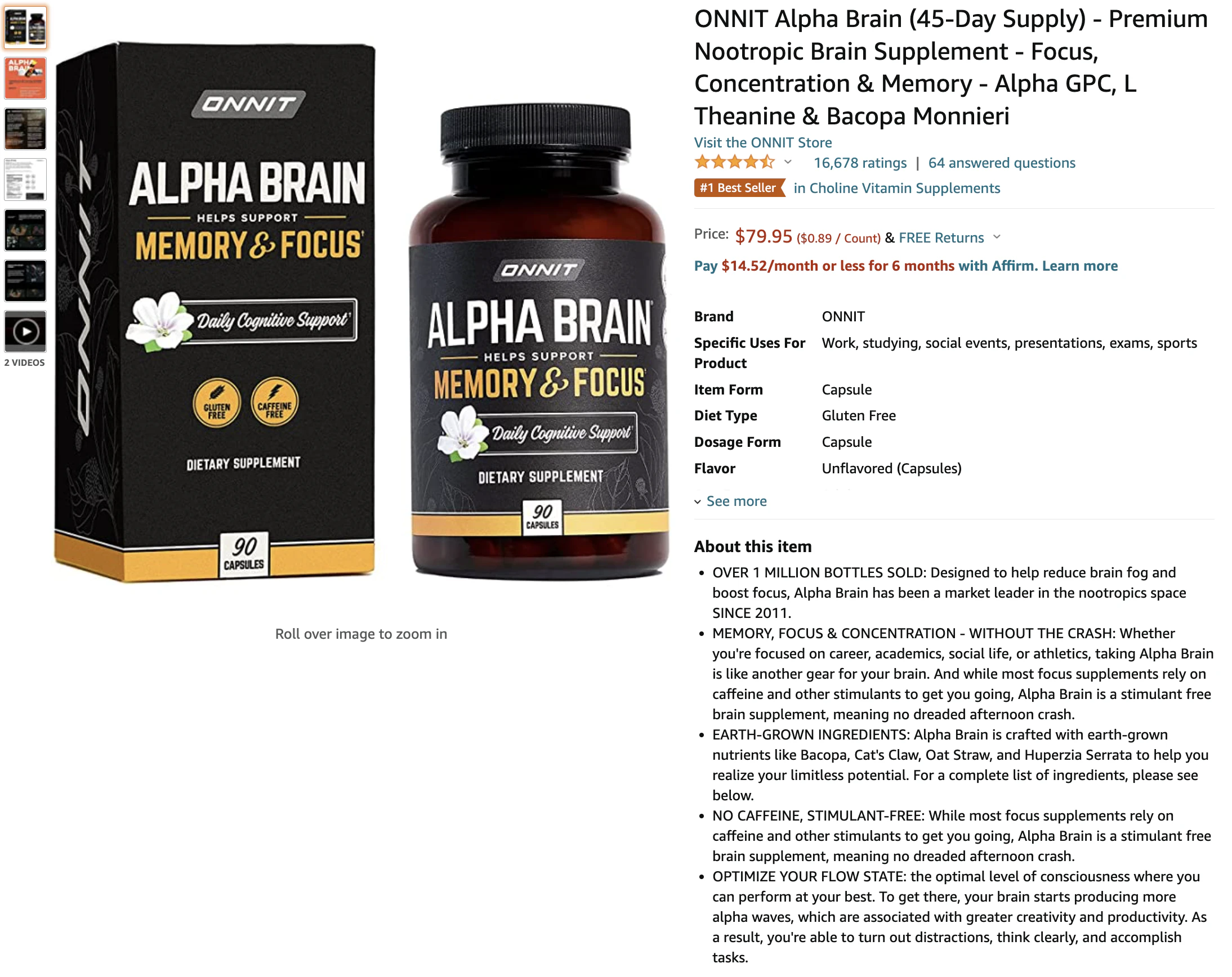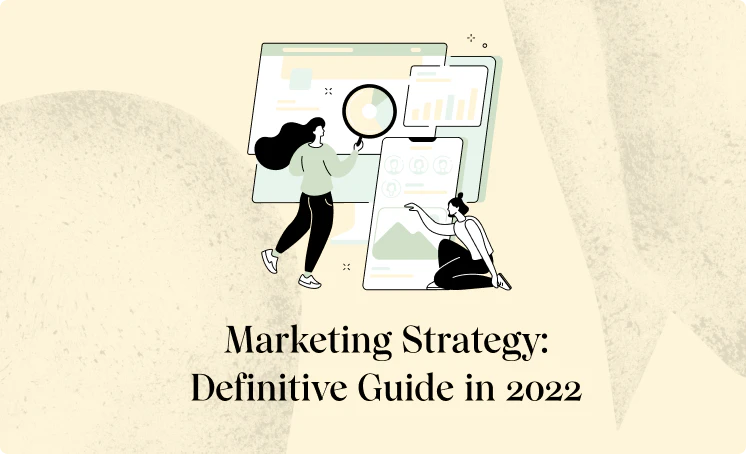Introduction
Amazon advertising strategy can seem complicated, but it doesn’t have to be.You can learn from experienced advertisers before you to help you boost your sales, and this article is to help you do just that.
What Is Amazon Advertising?
Amazon advertising is run entirely through Amazon PPC – the marketplace’s native advertising pay-per-click platform.
Ads are displayed in the search results, on product pages, and throughout other areas of Amazon, like the coupons page.
Amazon determines when an ad is shown through the use of keywords, similar to Google Ads.
Advertisers bid on keywords, and Amazon chooses the winner based on the bid and the ad relevance, among other things that Amazon does not share.
How To Create An Amazon Advertising Strategy
How you set up your Amazon advertising strategy will depend on what you are attempting to accomplish.
Advertising on Amazon can help you launch new products, build momentum for bestsellers, and liquidate old inventory.
Below we’ve compiled a list of strategies that can help you increase sales no matter what your overall goal is.
22 Amazon Advertising Strategy Tips To Boost Your Sales
1. SET YOUR GOAL.
You need to answer two questions before you spend any of your marketing budget.
1. Why are you running the campaigns?
2. What is the maximum amount you’re willing to spend to meet your goal?
If your goal is to get sales, you’ll need to determine your target ACoS and your maximum budget. You’ll need to keep in mind that the costs will be higher at first while you test and optimize.
On the other hand, if your goal for the campaigns is to get in front of customers to build your brand awareness, you need to decide how many impressions you’re trying to reach and the budget you’re willing to set to get those views.
Your goal and budget will help to guide the type of ads you’ll want to run and the placement you’re aiming for as well.
For example, Amazon has added sponsored video ads that aren’t the cheapest to run but take up a lot of real estate in the search and are great for brand building.
2. ADVERTISE THE RIGHT PRODUCTS.
Not all products are meant to be advertised.
You may think that advertising your lowest selling products may give them an extra boost to get sales, but this probably isn’t the right call.
The products that perform the best in ads are typically your best-selling products. Your customers already love them, and the chances are good that other shoppers would too.
If you are trying to move a low-selling product, running a coupon campaign or lightning deal is your better choice. You could run ads to the coupon if you want to give the coupon a boost.
If you are running an add to a parent listing with several child listings, always choose your most popular option. It prevents your ads from competing against each other, and all of the child listings will ultimately get some kind of boost from the traffic.
Best selling products aren’t the only things you should advertise, though.
When you launch a new product, you’ll need to advertise to build your listing. It will cost more than advertising your most popular items, but it’s the best way to build sales.
3. CREATE CLEAR, CONVERSION-DRIVEN PRODUCT PAGES.

Once your ad gets the click, your product page needs to finish the job.
You’ll want every product benefit to be called out in both your bullets and in your product photos. That way, whether your customer prefers to browse the copy or the photos, they’ll know what they are getting.
Keep every part of your listing clear, and to the point so it’s easy for your customers to scan.
Provide essential details like product materials, size, and colors in your description when they are needed for your customer to make a decision.
Ask yourself what questions you’d need to be answered before you would buy the product and attempt to answer them in your listing.
4. CHOOSE YOUR AD PLACEMENT.
Amazon offers different ad placement options, and who they are available to, and what they cost vary.
Display, voice, and video ads are all available through Amazon PPC. Voice ads are for Alexa devices, but display and video ads are displayed on desktop and mobile.
Sponsored product ads can be displayed on the top of the search, throughout the search, or on product pages. The top of search is typically the most expensive placement of the three options.
You’ll want to experiment with the different placement options to see where your product has the best performance. The extra clicks you may receive through the top of search placement may not result in enough sales to make up for the cost.
If you sell a higher-priced item where customers typically compare several options, like in the technology space, you may find that you do better with displaying your ads on the product pages of your competitors.
Sellers and vendors on the Brand Registry get access to special ad placements that aren’t available to other sellers.
5. TEST SPONSORED BRANDS COMPARED TO SPONSORED PRODUCTS.
If you are part of Amazon’s brand registry, you have the sponsored brand ad placements available to you.
But are the ad types available only to registered brands the best option for your campaigns?
If you are trying to build brand awareness or introduce new products to customers, then the sponsored brand ads that display multi-products at the top of the search results are the right choice.
However, if you’re trying to sway customers from another brand, you might be better served by using standard sponsored products that display on similar products’ pages. The sponsored product ads will likely also cost you less.
You’ll want to test both sponsored brand and sponsored product placements to determine which will give you your lowest ACoS based on your campaign goals. Don’t assume that because the placement type isn’t available to everything that it means it will yield better results.
6. LET CAMPAIGNS RUN BEFORE MAKING CHANGES.
It can be tempting to make constant changes to your campaigns, but if you start making changes too early and too frequently, you won’t end up with conclusive data.
Set a number of clicks you want to reach or a time frame, and let your campaign run until you reach that number.
The right number of clicks or time frame will vary by category. Some product categories get hundreds of thousands of sales and a day while others only get hundreds. Consider what product your category is in when deciding on how long you’ll let your campaign run.
Once the campaign ends, comb through the data and make your changes accordingly.
7. MAKE ADVERTISING DECISIONS AT THE PRODUCT LEVEL.
When you have multiple variations under one listing, you may be lumping all the variations to come up with your profit margins and make advertising decisions.
And if that’s what you are doing, you need to stop now.
Inevitably, all of the product variations will have different sales volumes and possibly varying costs to manufacture. By grouping them all, you are punishing your most profitable products.
Take a look at each variation as an individual product when you run your calculations. You’ll then know which of the variations will get you the best return on your ads.
Another perk of looking at each variation as its own product is that you won’t be product ads won’t be competing against themselves by running campaigns for each scent, flavor, color, or size.
You might be surprised at how little the sales of your lower selling variations are affected by only running ads to the top-seller.
8. USE THE FLYWHEEL EFFECT.
Amazon has set up its advertising so that sellers who use it will see compounding benefits.
On the surface, you will use ads to drive customers to your listing right then. But what happens after that?
Well, because you’ve had more traffic, you’ve likely had more sales. More sales results in looking more favorable to the algorithm, especially when those sales lead to reviews and positive seller feedback. So, your listing is shown higher up in the organic search results the next time.
This is called the Amazon Flywheel Effect.
Paid advertising turns into sales and reviews, which turns into a stronger organic reach lowering your ACoS. This way, you can afford to increase your advertising and continue growing.
Because of the flywheel, the sellers that choose to use Amazon PPC will see their listings surpass their competitors’ listings even if they have been around longer.
9. UTILIZE CATEGORY-SPECIFIC TARGETING PARAMETERS.

While Amazon doesn’t have the audience targeting capabilities of a platform like Facebook – not yet at least – it does have the capabilities to let you decide the parameters of where and when your listing is shown.
Product Attribute Targeting allows you to control where your ads are shown by targeting specific ASINs or categories, including brands, ratings, and prices.
Note that you can only access this targeting if you are using manual campaigns.
So, if you don’t want your product to show on competitor pages with products that are significantly lower priced than yours, it won’t.
10. DON’T FORGET TO USE NEGATIVE KEYWORDS.
Amazon doesn’t always know best. The algorithm doesn’t know the details of your product outside what you share in your listing.
The algorithm has no way of knowing that your women’s sweatshirt doesn’t come in red unless you explicitly state that it doesn’t. You need to tell Amazon that you don’t want your listing to show in the results for “women’s sweatshirt red” or risk paying for a click that won’t result in a sale.
The way you tell Amazon is by adding negative keywords in your campaigns.
You have limited space for negative keywords, so you may want to wait until your ad runs, and you can check your reports for good negative keywords to add.
You’ll want to look for keywords that aren’t getting any clicks, keywords that are getting a high volume of clicks but aren’t converting, and keywords costing you over your target ACoS.
11. HAVE A MOVING TARGET ACOS.
Your target ACoS needs to vary across your campaigns.
We all know that every product varies on how much it will cost you to get a sale, but your goal ACoS will need to vary for the same product from time to time as well.
Let’s say, for example, that you’re launching an updated version of your product. You might think your target ACoS for both version 1.0 and version 2.0 since it’s the same product.
But the chances are low that this will happen.
Your goal for version 1.0 is likely to liquidate the inventory you have left, so you might have the price be slightly lower. Version 1.0 also has the benefit of sales history and reviews. Given this, version 1.0 will likely have a lower ACoS. Possibly much lower.
Whereas version 2.0 is a product launch, which tends to have a higher target ACoS, even if it’s a re-launch of the same product.
The bottom line is that you have to consider the type of product, circumstances, goals, and profit margin of each product (including variations) to set your goal ACoS for each campaign.
Don’t count a campaign out just because it has a higher advertising cost of sale than another campaign.
12. USE AUTO CAMPAIGNS TO FIND KEYWORDS.
It’s hard to give up control of your advertising, but Amazon may know something that you don’t.
When you set up manual campaigns, you tell Amazon what keywords to use based on your research. But when you let Amazon take over, it uses its vast knowledge of what is working and comes up with keywords for you.
Amazon’s automatic campaigns can show you successful keywords that either wasn’t on your radar or that you had written off possibly in error.
Plus, automatic campaigns will find you these keywords at a lower cost most of the time.
You can then pull the keywords and incorporate them into your manual campaigns allowing you to optimize the results further.
13. USE AUTO CAMPAIGNS TO HONE IN ON THE RIGHT BIDS.
How do you know if you are bidding too high on your keywords?
Amazon provides you a suggested bid, but it’s not clear how that suggested bid is calculated. It’s the number Amazon feels confident would win you the auction. But if you are using the suggested bid or slightly higher, you’re probably paying too much.
Luckily, you can run automatic campaigns to get an idea if you may be overspending.
While you can’t choose your keywords in an automatic campaign, the keywords will be at least similar, meaning the winning bids would be similar as well.
When you’re running your automatic campaigns to find potential new keywords, pay attention to the cost-per-click those keywords are costing. If it’s lower than what you’re paying for your manual campaigns, it’s time to adjust your bids.
14. KEEP OPTIMIZING YOUR BIDS BY KEYWORD AND PLACEMENT.
Using automatic campaigns to evaluate the CPC is just one way you can optimize your bids.
You can also optimize your bids by setting your default bid at the keyword level instead of at the ad level. By setting your bids at the keyword letting you aren’t left overpaying because of your weaker keywords.
Optimizing your bids will require you to take a hard look at your data. You’ll need to evaluate each keyword and placement performance to determine your default bid and if you want to use any bid multipliers.
15. MAKE YOUR TITLE COMPELLING.
Your customers won’t know what keywords you’re targeting with your ads, so your product title will need to get them to click through to your listing.
The product title should include your most vital keywords, your brand, product type, and the size, materials, color, scent, or flavor as applicable. Provide as much information in your title as your customer needs, without keyword stuffing or having any vital details cut off on mobile.
The best practice is to front-load your title with your most valuable keyword to catch customers’ attention whether they are using desktop, mobile, or the app.
16. UTILIZE MATCH TYPES.
Broad, phrase, and exact match keywords all have their place.
Broad keywords are great for helping you find new long-tail keywords you can use in your listings and campaigns, but they are generally more expensive.
Phrase and exact match keywords will require lower bids, but you need to know specifically what your customers are searching for them to work.
As you gain more information on your keywords, using match types can give you advanced control over when your ads are shown and prevent you from competing for keywords that aren’t worth the price.
17. USE YOUR AD KEYWORDS IN YOUR LISTING.

You’ll want to make sure the keywords you targeted with your campaigns match the phrasing on your page. If your customer clicked on a sponsored product ad for a sofa and then your listing refers to it as a couch throughout, it could throw them off.
Try to use as many of your campaign keywords in your listing as possible, so the customer knows the ad they clicked was the right choice.
Not to mention that by using the same keywords in your ad and in your listing, you’re adding to the flywheel effect we covered earlier.
18. DEVELOP AN ORGANIZATIONAL SYSTEM FOR YOUR CAMPAIGNS.
There is no one right way to organize your Amazon campaigns. The critical part is that they are organized in a way that makes sense to you where you can accurately track and monitor the data.
Some advertisers choose to organize their campaigns by types of keywords like top-performing keywords, branded keywords, and competitor keywords. This works well for most campaigns.
Other advertisers choose to put each product on its own campaign, so there is no overlap. Choose whatever system you can stick to.
19. BID ON COMPETITOR KEYWORDS.
Have you looked into what keywords your successful competitors are targeting?
If not, you should.
You could try to manually figure out what keywords they are targeting by evaluating what keywords are in their listings then entering them as a search term.
Or you can do it the easy way by finding a tool that offers reverse ASIN lookup that will tell you the keywords.
These methods won’t give you the performance metrics of the keywords, but based on the search volumes, you can get an idea.
20. USE DYNAMIC BIDDING ACCORDING TO PERFORMANCE.
You can further optimize bids by utilizing the dynamic bidding options.
Dynamic bidding can cut your bid down to nothing if Amazon believes it’s unlikely you’ll get a sale saving your budget for better-suited customers.
Amazon uses its knowledge of customer patterns to make your ad budget go further.
21. DON’T FORGET TO USE LONG-TAIL KEYWORDS.
Long-tail keywords can’t compete on search volume, but they can compete on cost.
There are far fewer competitors for a long-tail keyword like women’s large black leather purse than the broad keyword leather purse. This means that your customers have fewer listings to browse before making a choice.
Conversions tend to be higher for long-tail keywords.
Shoppers entering a long-tail keyword know exactly what they are looking for and will buy it if they find it.
22. ANALYZE DATA TO IMPROVE YOUR ADVERTISING.
Amazon provides you plenty of data to learn what is working with your campaigns and what’s not.
The first thing you need to do is download your search term report. Your search term report will tell you what keywords are getting you clicks and conversions.
If you find the search term report difficult to gather insights from, you can add the data to a spreadsheet to reorganize and better visualize your metrics.
Final Thoughts
Running campaigns on Amazon comes with no shortage of potential strategies.
But you don’t need to use every strategy out there.
Start with mastering one at a time and continue to apply additional goal-based PPC strategies until you’ve optimized your campaigns.














.webp)

.webp)








.webp)









































.webp)






